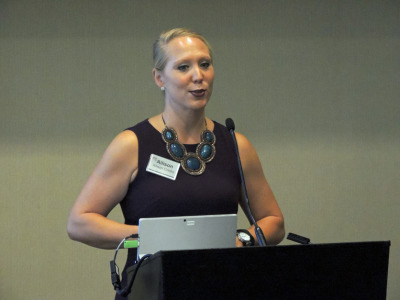Livestock haulers will get another 90-day waiver on hours of service trucking regulations, the U.S. Dept. of Transportation announced Tuesday. That buys ag organizations a little more time to negotiate a long-term solution. But will 90 days be enough?
Groups like the National Cattlemen’s Beef Association (NCBA) and National Pork Producers Council (NPPC) were expecting news at some point this week on a new waiver and just how long the current waiver on federal hours of service regulation for transportation of live animals would last. On multiple trips to Capitol Hill this month, Transportation Secretary Elaine Chao sounded understanding of the plight facing livestock haulers. She told House and Senate committees that she was “sympathetic” on the issue and said “a decision will have to come out before March 18th.”
In a statement, NCBA President Kevin Kester said pushing the deadline back to June allows more time for hauler education about the new rules “while industry works on a solutions to current Hours of Service rules that simply do not work for those hauling live animals.”
Under a DOT rule issued in 2015, truckers were required to install electronic logging devices (ELDs) in their rigs by December - replacing paper logs of their trips. The ELDs are used to keep track of how long a trucker has been on the road, enhancing enforcement that requires 10 hours of rest for every 11 hours of driving.
Livestock groups have – successfully – sought to exempt their industries from the requirement, arguing that transportation of live animals should be treated differently than other forms of cargo. Live hogs, for example, can’t wait in the trailer for 10 hours while a driver gets the necessary amount of rest. Those animals would have to be unloaded, bringing biosecurity concerns into the equation.
There have been some struggles in getting the DOT and the Federal Motor Carrier Safety Administration to understand just how serious an issue this could be for livestock haulers. In fact, at one of the first meetings with farm groups, the ag coalition – consisting of NPPC, NCBA, the American Farm Bureau Federation, the Livestock Marketing Association, and others – had to explain to administration staff that livestock are no longer shipped via rail to the Chicago stockyards for processing.
“I think we’ve made a lot of progress there. They’re coming at this from a different perspective,” Michael Formica, a lobbyist with NPPC, tells Agri-Pulse. “Their mission is to protect safety on the highways. That is a worthy goal, and that’s their focus. Their focus isn’t on animal welfare or agricultural development.”
The coalition also met last week with FMCSA Administrator Ray Martinez, who told members that it was his first meeting with an outside group. NCBA’s Allison Cooke said the coalition left feeling understood.

Allison Cooke, NCBA
“I felt like he recognized the needs of livestock haulers, and that’s helpful,” she said.
Chao has said that DOT is “tied legislatively” and has pledged to work with Capitol Hill on a legislative solution to the problem. But the coalition hasn’t completely dismissed trying to handle the change administratively, either.
“We are looking at all options as we move forward,” Cooke said. “At the end of the day, we have to have something that’s workable for transporting livestock across this country.”
Neither Formica nor Cooke expanded on the solutions being considered. Formica did note that the needs of the beef industry will likely drive the truck, if you will, during negotiations, primarily because of differences in the sectors. Pork production is much more concentrated, leading to fewer instances where haulers might bump up against the 11-hour driving cap. Beef production, on the other hand, is more spread out and could involve more transportation of the animals in the different stages of production.
Cooke downplayed the idea that NCBA would have final say in deliberations, but did say that “what works well for beef is going to work well for most of the other groups out there, and that’s the consensus that we have.”
The National Grain and Feed Association has pushed for clarifications that would give grain elevators an exemption from the hours of service rule, as well. But the coalition’s primary focus remains on language for live animal transportation, not necessarily agricultural product movement.
“I would love for all of agriculture to get the same deal we get, but whether that happens or not, I doubt it,” Formica said. “At the end of the day, we have live animals, and a live animal is different than a truck full of grain.”
For more news, go to www.Agri-Pulse.com


